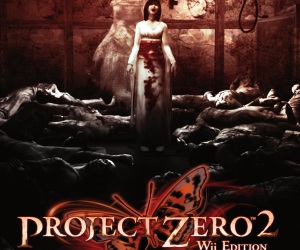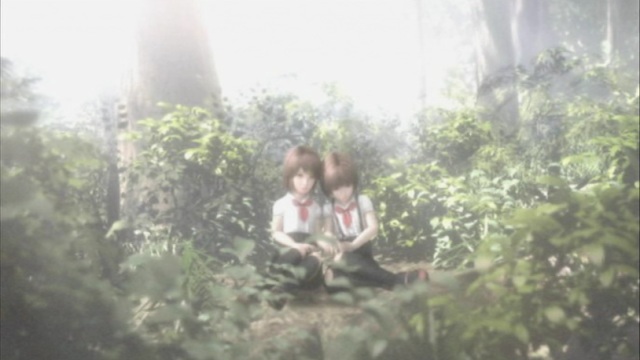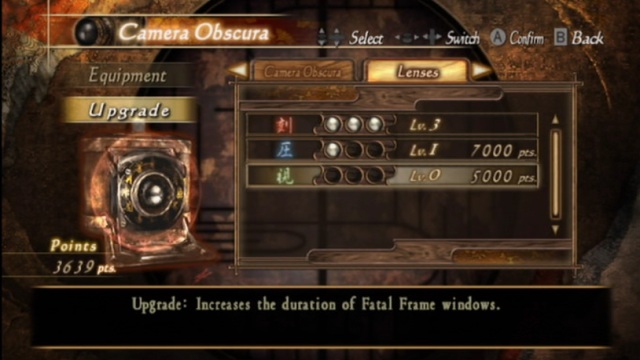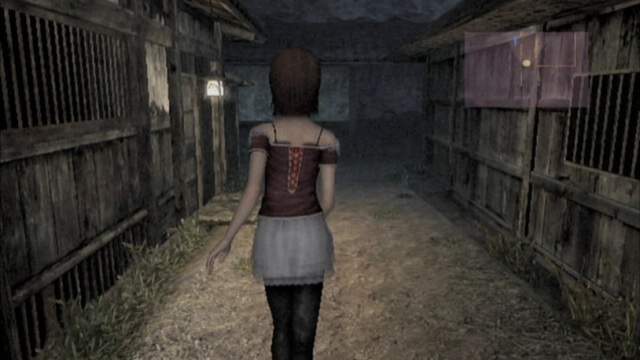Project Zero 2 Wii Edition Review
 Game: Project Zero 2 Wii Edition
Game: Project Zero 2 Wii Edition
Developer: Tecmo Koei
Publisher: Nintendo
Available on: Nintendo Wii only
Project Zero – or Fatal Frame as it is known in Japan – has always been something of a slept-on series in the West. Where the survival horror genre has been dominated by Capcom and Konami with their Resident Evil and Silent Hill brands. But where those two big hitters have evolved, moving away from the traditional horror game staples and branching out into different game styles and terrible movie spinoffs, Tecmo Koei’s camera wielding Shinto ghost ‘em ups have remained true to the essence of the first game from 2001, relying on measured, slow building horror and traditional Japanese creepiness.
The last straight up Fatal Frame title – Mask of the Lunar Eclipse – was a Japan-only Wii exclusive developed in tandem with the always-interesting Grasshopper Manufacture. It is the finest instalment in the series, perhaps the best horror title for the console and received some excellent reviews. But to date a Western translation has not been forthcoming despite fans clamouring for a release. Oddly, rather than porting the terrific fourth game in translated form, Tecmo Koei teamed up with Nintendo to produce a remake of the second Fatal Frame title, Crimson Butterfly, which originally surfaced in 2003. It is a resolutely old-school survival horror game, which was highly regarded in its original form. But is there a place for it in 2012, on Nintendo’s ageing motion-controlled wonder?
STORY: Before being transported into the maelstrom of vengeful Japanese ghosts and camera shutter craziness, there of course needs to be a good old horror yarn to set the scene. Here, the action centres around twin sisters Mayu and Mio, who we first encounter when they are visiting a favourite childhood play haunt. Twins are creepy enough as it is without involving the paranormal, and these two young lasses are no exception. Mayu, who can be identified by her gammy leg, the legacy of an accident when she was a little girl, spots a strange crimson butterfly fluttering in the distance. She follows it into the woodland, out of sight, leading Mio to chase after her sister. Bad move, nothing good ever comes out of venturing into deep, uncharted forests in these types of games and before they know it, the siblings find themselves in a mysterious village, a spook-filled Japanese take on Silent Hill, where some very bad things have happened. They become embroiled in a horrifying tale of bloodthirsty rituals, creepy Japanese folklore, Mayu’s descent into madness, portals into hell, ghosts, sororicide and more ghosts.

GRAPHICS: Despite the underpowered console at their disposal, Tecmo have done a superb job of bring the scary environments of Project Zero to life, as well as the characters and ghostly denizens that populate them. It is a game nearly a decade old, so a straight port would not have cut the mustard – and yes, there are some dodgy textures and blurring issues from time to time – but a massive overhaul job of the last-gen original has been carried out and as a result it is one of the best looking Wii titles yet seen. The ghosts in particular are superbly done, looking genuinely scary even when captured right up close, they evoke fair comparisons to some of the pant-shittingly frightening Japanese horror movies released in recent years. If you like stuff like Ringu and Dark Water, you will feel right at home here.
SOUND: Voice acting is handled by some English actors, who do a decent enough job, but it does seem a bit odd hearing a cut glass British accent emanate from obviously Japanese protagonists. Given the setting and the storyline, it would have been much more effective if the original voice acting had been included, or an option to switch to it at the very least. There are however some superb sound effects. Whispering, chattering, spectral voices, scratchy radio transmissions, classic moaning and wailing from the evil spirits, it is excellent stuff that helps build up the tension rather nicely. There is a splendid theme song entitled “Kurenai” which sets the scene well, and is delivered by popular warbler Tsuki Amano, who has the distinction of actually looking like a evil Japanese ghost herself; how very apt.
GAMEPLAY: Borrowing the over the shoulder viewpoint that was introduced to the series in Fatal Frame IV, the game involves traditional survival horror gameplay elements like searching for items, solving puzzles, negotiating nightmarish environments and dispatching enemies. There are some nice touches like the slow, tentative way your character reaches out to pick up items, open doors or pull back eerily moving curtains. There are some great scares too, such as the Spirit Hands, also pinched from Fatal Frame IV, which suddenly spring from nowhere and attempt to grab you when you are in the process of investigating an item.

The difference between this and something like Resident Evil, is that rather than using an arsenal of weapons to exact bloodthirsty enemy kills, Mayu is armed only with a torch to help her see in the darkness and the Camera Obscura, an awesome device most definitely not available from your local Jessops, which allows you to “attack” your ghost foes by taking snapshots of them. Along the way you can upgrade your camera by spending the points that you gain from taking pictures of, and therefore “capturing” ghosts, and there are three additional lenses that can be equipped to your device which have different effects, like stunning ghosts enabling you to more easily take a killer portrait. It is genuinely satisfying when you successfully take out a ghost, particularly when you hit the sweet spot and achieve a points-winningly ace Fatal Frame attack, and there is a varied rogues gallery of paranormal creeps to encounter over the course of your adventure.
Being a Wii Edition, Tecmo have shoehorned Wii controls into the mix. Yet again, the lack of sensitivity and overall inaccuracy grossly affect enjoyment of the game. Movement for the most part is absolutely fine, as the nunchuck stick works well, and can be combined with the Z button to run. The camera and torch controls are where the Wii fails. The torch is equipped at all times and is aimed by tilting the controller. God only knows what possessed (no pun intended) Tecmo to use this method of control, particularly without the benefit of the performance-enhancing Motion Plus. The level of sensitivity is so hit and miss that you will be screaming in frustration that the more reliable pointer method was not employed to aim the beam of light, often so crucial during gameplay to seek out hidden items or routes in the darkness. Operating the Camera Obscura is less of a chore given that once you bring it into play using the B trigger, the tilting method is abandoned in favour of using the analogue stick to move it around . But another clunker is delivered by the fact that completing a 180 turn is achieved by waggling the remote, a ludicrous inclusion which can make enemy encounters – most of which involve tackling ghosts that move around and require lots of turning and spinning around – a complete mess. You can Z-target ghosts if you are quick enough, but the oft-inaccurate controls means it can be difficult to achieve even this.

The dodgy controls are even more evident in the new mode Tecmo have tacked on to the main game – Haunted House – a kind of on-rails shooter where you are required to prevent Mayu dying from fright by ensuring that you do not shake the controllers too frequently. Trying not to shake in order to control fear is a great idea in principle, however the sensitivity issues are reversed here, meaning that even when you inadvertently move the nunchuk when controlling the stick, or have to raise and shake the remote to turn, you rack up the on screen fear meter leading to death. It is all a bit odd, and adds little all to the main game.
LONGEVITY: Completing the main campaign will take a good few hours, but replay value is to be had in the fact that there are – like the original – a number of different endings. Some of these are “bad” endings that lead to a game over screen, so ensuring that you make certain decisions along the way is essential in order to receive a satisfying conclusion.
VERDICT: Odd controls system aside, this is still the same excellent Project Zero title we know and love, given a nice aesthetic overhaul. Fans of old-school proper survival horror games will love it, because despite its age and origins in the last generation it still feels fresh and is a series that many gamers of today will not have encountered. There are some very scary moments and a decent ghost story underpinning the action, creating an atmosphere that is far truer to the roots of the genre than other more modern scary games. It is another late-period gem for the Wii, which is well worth investigating, if you can see past the technical difficulties.





